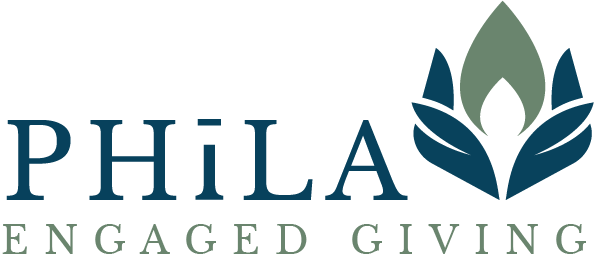Janell Johnson, Philanthropic Advisor
The origins of Mother’s Day are deeply rooted in philanthropy and grassroots advocacy. In response to appalling infant mortality rates and poor sanitary conditions, in 1858 Ann Reeves Jarvis organized a Mothers’ Day Work Club to mobilize women to take action by purchasing and distributing medical supplies and providing in home education to families in need. Their work later evolved into antiwar activism that led to unity and reconciliation among Confederate and Union soldiers.
Members of the Mothers’ Day Work Club took bold action, responding to present needs in the community with their time, talents, and treasures leaving a lasting legacy. These values – health, welfare and unity – are still present in today’s modern nonprofit sector where women continue to demonstrate leadership, passion, and conviction. As of late, this leadership is on display for the world to see as stories of transformative women philanthropists fill the media airwaves. While we continue to honor the contributions of these incredible women, it’s important recognize commitments at all levels.
As noted in this Forbes article on women philanthropists who offer advice to younger women on having an impact, regardless of one’s age or financial status there is room for everyone at the philanthropic table. You don’t have to be a billionaire philanthropist or social activist like Ann Reeves Jarvis to leave a legacy.
Even if you are unable to give to charity right now, many women are leaving meaningful legacies that extend far beyond their lifetimes through Planned Giving. Planned Giving simply refers to the financial and legal tools used in the gift planning process. Many of us have life insurance policies or retirement plans that offer comfort and security during life and provide for loved ones, but did you know that these tools also make wonderful legacy gifts to charity? Gifts of this kind do not impact your current finances, they’re tax efficient, and are very easy to arrange.
Here are a few simple gifting approaches and things to consider as you embark upon your gift planning journey:
Retirement Assets
If you are like most people, you probably will not use all of your retirement assets during your lifetime. Around 60%-70% of your retirement assets may be taxed if you leave them to your heirs at your death. Donating unused retirement assets, such as your IRA, 401(k), 403(b), pension or other tax-deferred plan, is an excellent way to support charity. Charities do not pay taxes on these kinds of gifts and benefit from their full value. Neither you, your heirs, nor your estate will pay income taxes on the distribution of the assets.
Life Insurance
Naming your favorite charity as the beneficiary/partial beneficiary of your life insurance policy is the simplest way to transfer death benefit proceeds from the policy. For policies that have outlasted their original purpose, such as providing for minor children who are now financially independent adults, you might consider gifting the entire policy to charity. If you still owe premiums on the policy, the charity might choose to take over those payments. You may also consider making an annual donations to cover the premium costs in exchange for a lifetime income tax deduction.
Beneficiary Designation Forms
It is not uncommon for retirement and insurance beneficiary designation forms to change several times throughout life to reflect your current relationships and financial goals. Often these changes can be made online or over the phone at no cost to you. The division of assets and gift values might be considered within the context of a comprehensive estate planning effort, but it’s not necessary. These are changes you can make on your own with the click of a button. Further, these gifts are completely revocable and can be changed at any time.
Bequests
A bequest is a simple statement in your will that transfers assets to charity. It’s completely revocable and can be changed or modified at any time. Below are some common ways to approach bequest giving:
Specific Bequest. A specific bequest involves making a gift of a specific asset such as real estate, artwork, or a gift for a specific dollar amount. For example, you may wish to leave your home or $10,000 to charity. Keep in mind that valuations are important in order to ensure that the property being gifted is truly representative of your intention in leaving the property.
Percentage Bequest. Another kind of specific bequest involves leaving a specific percentage of your overall estate to charity. For example, if you wanted to leave 10% of your estate to charity you might name one charity or divide that percentage among several organizations. This is heartful work and there is no wrong way to do it.
Residual Bequest. A residual bequest is made from the balance of an estate after the will or trust has given away each of the specific bequests. A common residual bequest involves leaving a percentage of the residue of the estate to charity.
Contingent Bequest. A contingent bequest is made to charity only if the purpose of the primary bequest cannot be met. For example, you could leave specific property, such as a vacation home, to a relative, but the bequest language could provide that if the relative is not alive at the time of your death, the vacation home will go to charity.
Legacy Society Recognition
Many nonprofits have established member associations called Legacy Societies to recognize people who have given notice of a planned gift. It’s their special way of recognizing your philanthropic leadership and allows them to celebrate with you during your lifetime. There is typically very little process involved in joining a legacy society other than a verbal commitment and minimal documentation of your gift.
If any of these ideas spurred new thoughts about how you might maximize your giving, reach out to me or your tax advisor/financial planner to join the movement by planning for gifts today that will make a big impact tomorrow. And Happy Mother’s Day!

